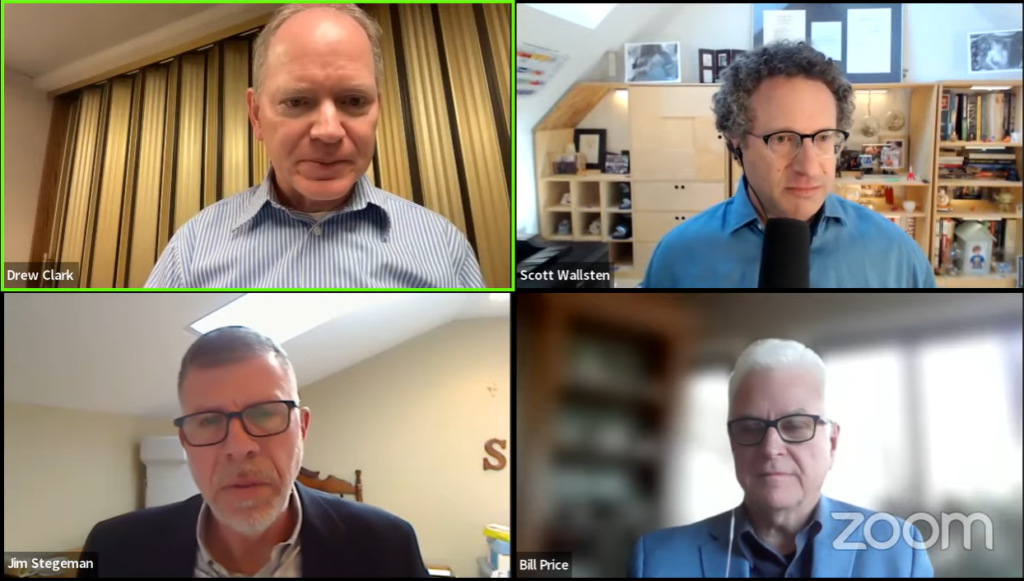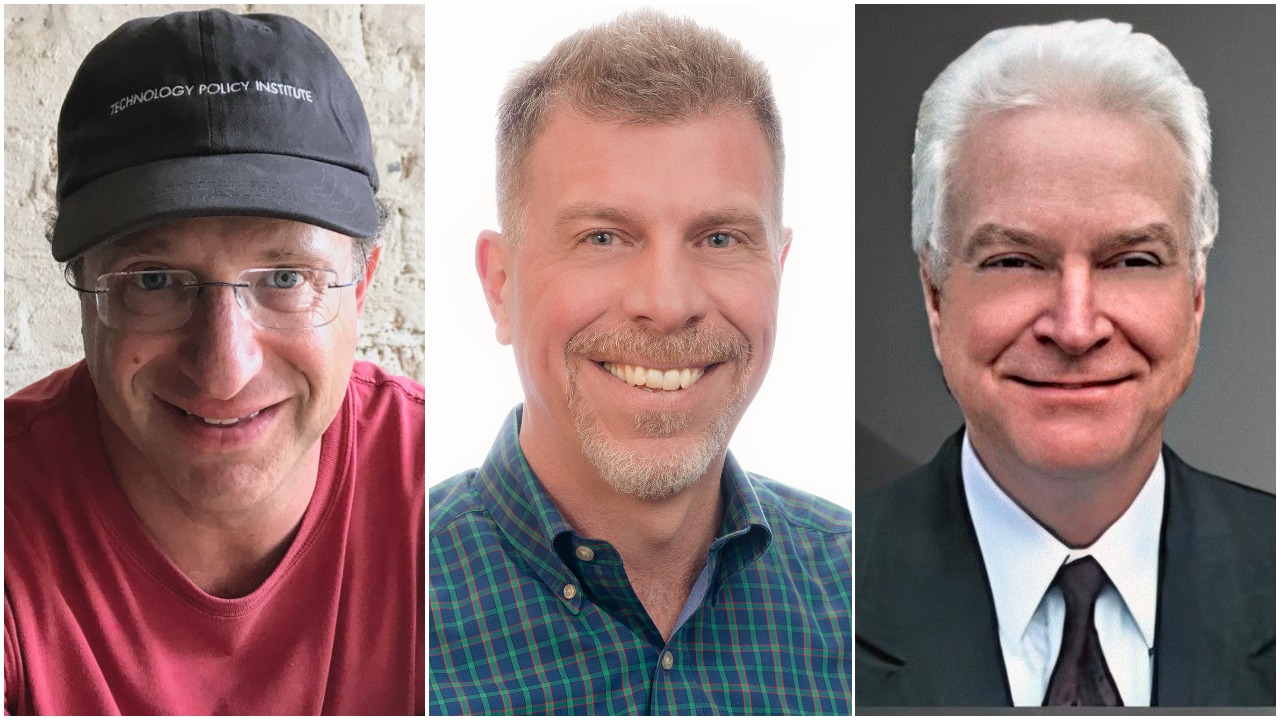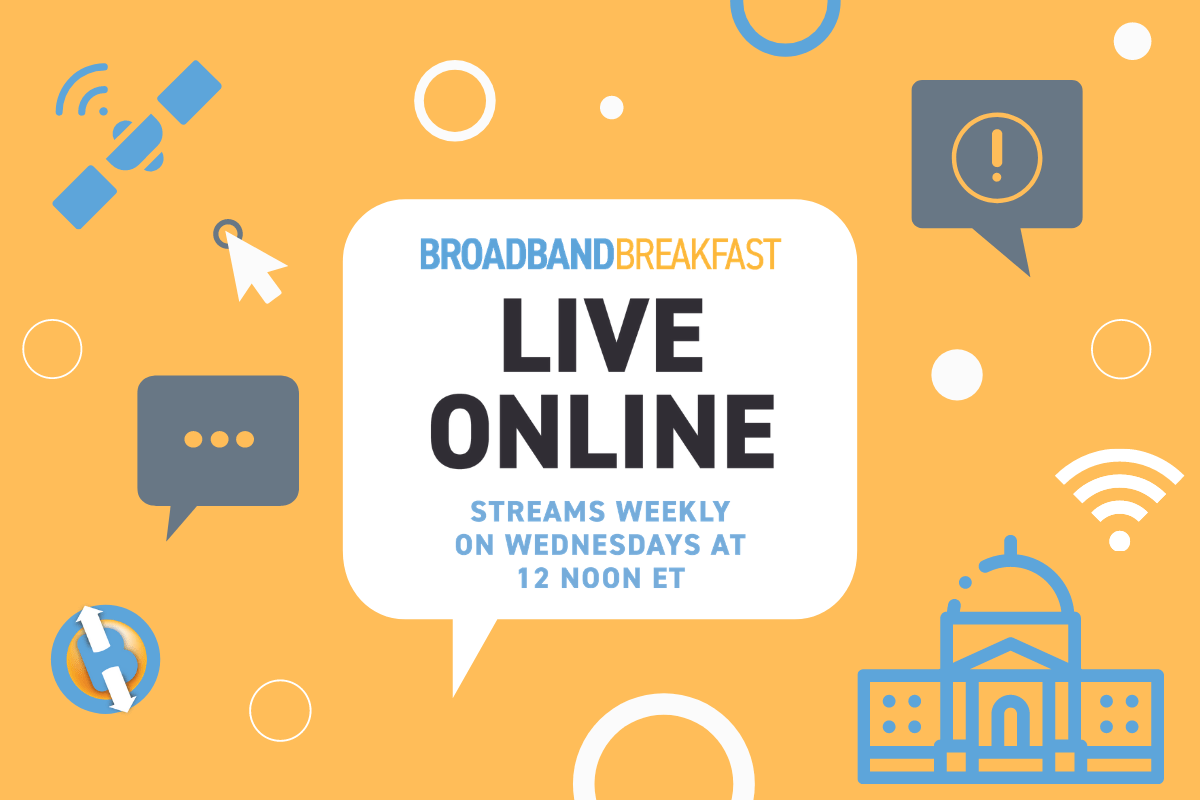Broadband Experts Agree on Multiple Datasets, Disagree on Level of Granularity for Maps
Three broadband experts on a Broadband Breakfast live event discussed data collection and specificity of mapping.
Benjamin Kahn

WASHINGTON, December 27, 2021 – Some experts are concerned that there is an overemphasis on the granularity of maps needed to rollout broadband in the country.
“I do not believe that trying to map every structure in the U.S. is the way to go,” said Scott Wallsten, president and senior fellow at the Technology Policy Institute, during a Broadband Live Online event on December 22.
“Broadband maps cannot actually be fixed once and for all,” Wallsten said. “The information is always changing and the sorts of things we want to know are also changing.”
Several federal departments and agencies have broadband mapping tools, with the Federal Communications Commission and the National Telecommunications and Information Administration working on improving the accuracy and the specificity of their maps.
Wallsten recommended that data commissioners make very clear what questions are being asked and draw data from several datasets.
Wallsten argued that if the only question at hand is an attempt to determine the general trends of broadband adoption, existing FCC maps are likely already sufficient. “You can learn a lot more from data that is already available than most people realize.”
If the question relates to which specific regions and areas need investment, then more data is needed.
“We learn more by combining data in different ways,” he said. “I do not think we are doing enough of that.” Wallsten said that to get a fuller picture and understand trends and needs, stakeholders need to draw from many different sources.
“Do not expect any dataset – or any combination of data sets – to have all the answers,” Wallsten said. “We do not want to create a situation where we tell governments there is one master dataset.”
President of CostQuest Associates Jim Stegeman echo Wallsten’s statements on using multiple different datasets “to really zero in on the issues.”
But he dissented slightly from Wallsten on granularity. Stegeman stated that CostQuest had a proof of concept demonstrating address level service reporting to provide data on a location basis rather than the broader census block basis and the “one served, all served” mentality that the FCC maps have historically been dependent on.
According to CostQuest’s proof of concept, Stegeman said that future maps could have access to the “location of every broadband serviceable point in the country – the latitude and longitude of the building – to where we believe broadband service needs to be delivered.”
Also participating in the panel was LightBox Vice President of Government Solutions Bill Price, who highlighted the company’s mapping work with Apple, Google and Zillow. The company has entered the realm of broadband mapping through a contract with the state of Georgia.
Given the large amount of funding that will soon be available to states for broadband contingent upon being able to identify underserved areas with a high degree of accuracy, Price said, “there is no reason why a state shouldn’t undertake an assessment of their maps” and seek to improve them.
Our Broadband Breakfast Live Online events take place on Wednesday at 12 Noon ET. You can watch the December 22, 2021, event on this page. You can also PARTICIPATE in the current Broadband Breakfast Live Online event. REGISTER HERE.
Wednesday, December 22, 2021, 12 Noon ET — When Will the Broadband Maps Get Fixed?
Now that the Infrastructure Investment Act of 2021 has been passed, states can expect to see the $65 billion for broadband infrastructure dripped out over the coming years. But to effectively allocate their resources, states must understand the full picture and be able to discern underserved communities from served communities and identify those communities that are completely unserved. During this event, we will discuss the current state of broadband mapping across the country and what needs to be done to improve it and ensure that this opportunity for historic infrastructure funding is not squandered.
Panelists for this Broadband Breakfast Live Online session:
- Scott Wallsten, President, Technology Policy Institute
- James Stegeman, President/CEO, CostQuest Associates
- Bill Price, Vice President, Government Solutions, LightBox
- Drew Clark (moderator), Editor and Publisher, Broadband Breakfast
Panelist resources:
- Broadband Maps Are a Mess, So Now Let’s Focus on Actually Improving Them, by Drew Clark for Broadband Communities
- Rural Broadband Today: Broadband Mapping for Rural America with Bill Price, on Apple Podcasts
- LightBox Announces the Completion and Availability of Its Enhanced Nationwide Smart Location Fabric, from LightBox
- The Economics of Subsidies to Rural Networks, by Steve Parsons and James Stegeman for the Southern California Interdisciplinary Law Journal
- State Broadband Expansion Programs – A Primer, from CostQuest Associates and Quadra Partners
- TPI Broadband Map, from Technology Policy Institute
- Broadband Maps for the States, from Technology Policy Institute
- TPI’s Broadband Connectivity Index, by Scott Wallsten
- Location Intelligence, from LightBox
- Unserved and Underserved in Maine, from CostQuest Associates

Scott Wallsten is President and Senior Fellow at the Technology Policy Institute and also a senior fellow at the Georgetown Center for Business and Public Policy. He is an economist with expertise in industrial organization and public policy, and his research focuses on competition, regulation, telecommunications, the economics of digitization, and technology policy. He holds a Ph.D. in economics from Stanford University.
James Stegeman, as President/CEO of CostQuest Associates, has been a major force behind the development of the latest generation economic cost models used by cable, telco, tower and wireless companies and state and government agencies in support of broadband deployment analysis. He led the design, coding and implementation of the Broadband Analysis Model (“BAM”) that was used by the FCC to develop and support the economic findings in the National Broadband Plan. He led the design, coding and implementation of the Connect America Cost Model (“CAM”, “CACM”, “A-CAM”) that is being used by the FCC to disburse more than $3 billion annually to fund broadband deployment and to set the reserve price in the RDOF and CAF II auctions. And most recently, he is leading the internal development of the Broadband Serviceable Location Fabric, which was awarded to CostQuest by the FCC. This national fabric will provide the underlying locational dataset for the upcoming FCC Broadband Data Collection effort and resulting national broadband map.
Bill Price, Vice President of Government Solutions, is responsible for LightBox broadband data and mapping solutions for government. Bill has more than 40 years in telecommunications and technology services development and operations. His track record includes delivering the Georgia statewide location level broadband map, the first fiber metropolitan area network in the U.S., and launching BellSouth’s internet service. LightBox combines proven, leading GIS and big data technology to transform how decisions are made in broadband infrastructure planning and investment.
Drew Clark is the Editor and Publisher of BroadbandBreakfast.com and a nationally-respected telecommunications attorney. Drew brings experts and practitioners together to advance the benefits provided by broadband. Under the American Recovery and Reinvestment Act of 2009, he served as head of a State Broadband Initiative, the Partnership for a Connected Illinois. He is also the President of the Rural Telecommunications Congress.
WATCH HERE, or on YouTube, Twitter and Facebook.

As with all Broadband Breakfast Live Online events, the FREE webcasts will take place at 12 Noon ET on Wednesday.
SUBSCRIBE to the Broadband Breakfast YouTube channel. That way, you will be notified when events go live. Watch on YouTube, Twitter and Facebook.
See a complete list of upcoming and past Broadband Breakfast Live Online events.










Member discussion